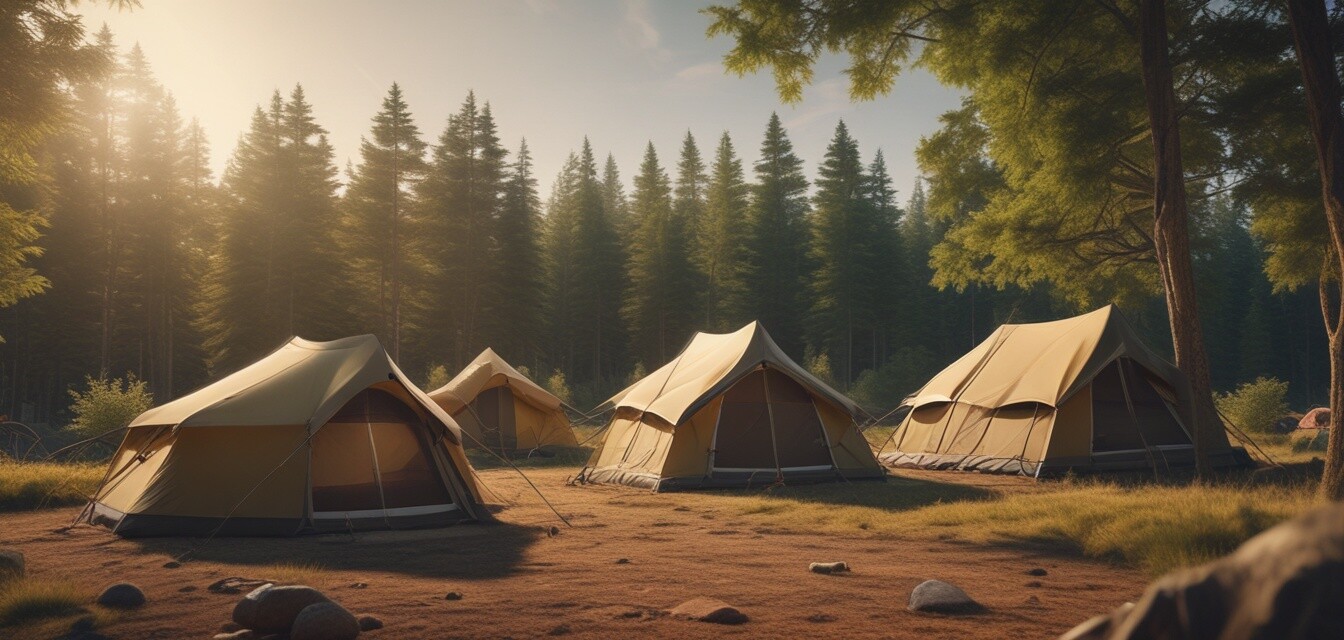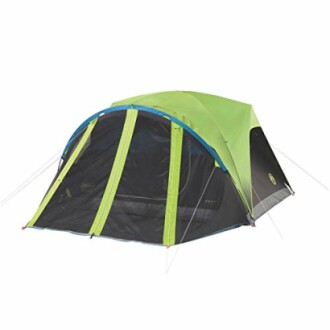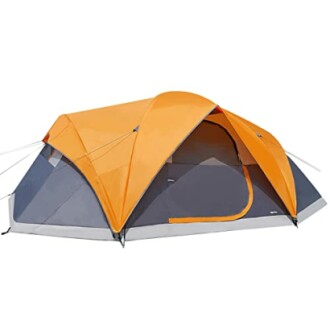
How to Choose the Right Tent for Your Adventure
- Consider the size and capacity of the tent for your group.
- Evaluate the seasonality of the tent based on your camping location.
- Understand the features that suit your needs, like waterproofing and ventilation.
- Think about the ease of setup and take-down.
- Look into extra amenities like screened porches or electrical access.
Choosing the right tent is crucial for a comfortable camping experience. Whether you’re planning a solo adventure or a family trip, the type and features of your tent can greatly affect your enjoyment outdoors. Here, we’ll help you navigate the world of tents, breaking down the various types and what to look for to suit your needs.
Types of Tents
Tents come in various designs, each offering unique benefits. Here’s a look at the most common types:
| Tent Type | Ideal For | Features |
|---|---|---|
| Dome Tents | Family and group camping | Best for wind resistance, easy setup, spacious interior. |
| Backpacking Tents | Solo or light travel | Lightweight, compact, quick setup. |
| Popup Tents | Quick trips and festivals | Instant setup, ideal for less experienced campers. |
| Family Tents | Group camping | Spacious with room dividers, features such as screen rooms. |
| Canvas Tents | Long-term camps | Durable, breathable, ideal for multiple seasons. |
Key Features to Consider
When choosing a tent, it's essential to keep in mind several critical features that will cater to your specific needs:
- Size and Capacity: Make sure you select a tent that can comfortably accommodate the number of occupants. Consider a bit of extra space for gear.
- Seasonality: Tents designed for different seasons come with unique features adapted for winter or summer use. Choose accordingly based on your typical camping conditions.
- Water Resistance: Look for tents that have waterproof ratings and good seam sealing to keep moisture out.
- Ventilation: Proper airflow is essential to avoid condensation. Features like mesh panels and vents can improve airflow.
- Setup Process: Some tents can be set up in minutes, while others may require more time. Consider how quickly you'll need to set up camp.
Review of Popular Tents
Here’s a closer look at some popular tents that are currently available, well-suited for beginners and seasoned campers alike.
Coleman Carlsbad Dark Room Camping Tent
This tent includes Dark Room Technology that blocks 90% of sunlight, providing a cooler and darker environment. It’s ideal for up to 6 people and has a screened-in porch for bug-free lounging.
Learn MoreAmazon Basics Dome Camping Tent
Accommodating up to 8 people, this tent features a water-resistant design with a removable rainfly for added versatility. Perfect for family adventures, it offers great airflow and easy setup.
Learn MoreTips for First-Time Tent Buyers
- Test the tent at home before your trip. Set it up and ensure all components are included.
- Check reviews and ratings before purchasing. Knowledge from previous buyers can be invaluable.
- Do not overspend; find a balance between features and budget without compromising quality.
- Consider additional accessories like tent footprints and guy lines to enhance your setup.
- Always plan for extra space for gear within your tent setup.
Conclusion
Your tent is your home away from home while camping. Picking the right one can make all the difference between a great adventure and an uncomfortable night. Remember to assess your requirements before making a choice, and don't hesitate to reach out to fellow campers or rely on detailed guides, like our Essential Camping Gear for Beginners article for more insights!
Pros
- Variety of options for different group sizes.
- Available features enhance comfort and safety.
- Easy-to-follow setup instructions.
Cons
- Higher-quality tents can be pricey.
- Some tents may require more complex setups.

